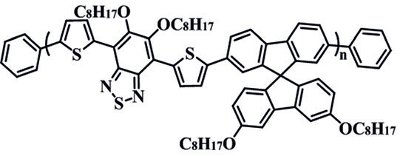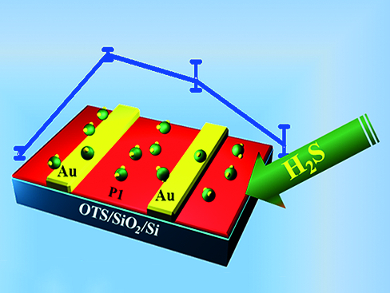Sensors based on organic field–effect transistors (OFETs) are very promising electrical sensors because of their simple configuration, low cost, and great potential for miniaturization.
Lifeng Chi and colleagues, University of Münster, Germany, have developed a sensor which can detect concentrations of H2S as low as 1 ppb. This is to date the most sensitive H2S sensor based on organic semiconducting film. The sensor shows high sensitivity, excellent selectivity, and a fast response. The system uses a a spirobifluorene-based polymer OFET (pictured below), which was deposited onto modified SiO2/Si wafers and combined with gold electrodes.

For sensors based on thin films, the ability of the film to retain analytes is an important factor in the determination of the sensor performance, and can be tuned by regulating the thickness of the active layer. By thinning the active layer, both the absorption and the desorption speed of the analytes increase. However, the desorption speed rises faster than the absorption speed, thus leading to a reduction of the performance of the sensor. The team has revealed that for this system an optimal film thickness of approximately 20 nm is required to retain enough H2S in the active layer and thus reach the highest sensitivity.
- Investigation on Sensing Process of High–Performance H2S Sensors Based on Polymer Transistors,
Lifeng Chi, Aifeng Lv, Ming Wang, Yandong Wang, Zhishan Bo,
Chem. Eur. J. 2016.
DOI: 10.1002/chem.201504196
This article is soon to feature in Chemistry ‒ A European Journal’s up-coming “Women in Chemistry” special issue




